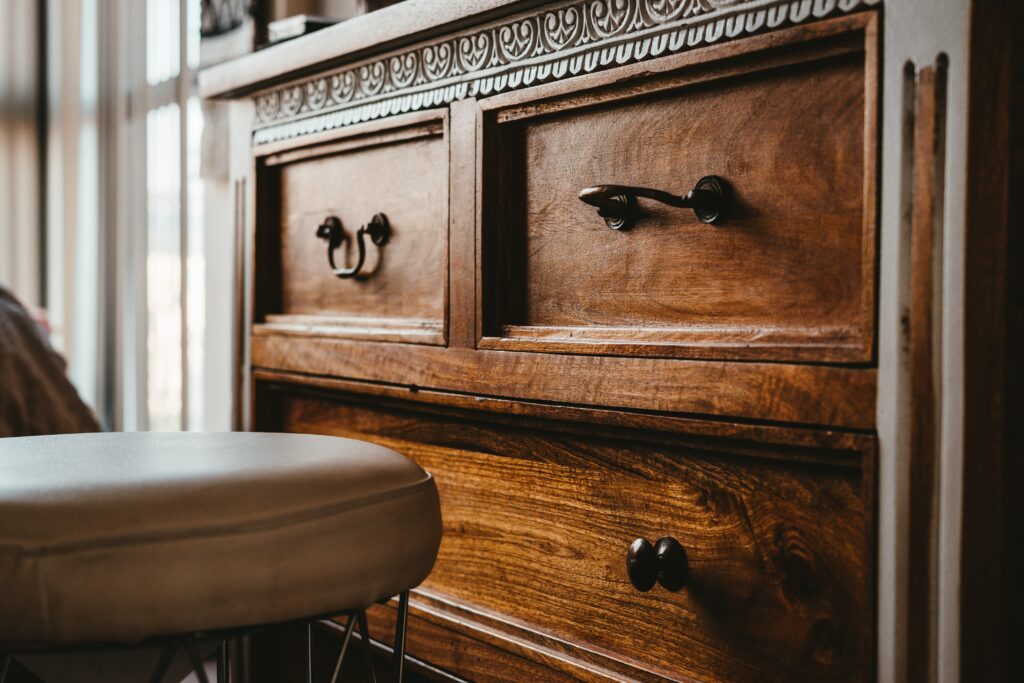Introduction:
Antique furniture possesses an enduring charm, showcasing the craftsmanship of eras long past and adding a distinctive touch to any living space. Whether you’re an avid enthusiast or a restoration professional, being able to identify antique furniture is essential. By understanding the key characteristics and distinguishing features of these prized pieces, you can make informed decisions and truly appreciate their historical value. In this comprehensive guide brought to you by Grit and Grain Restoration, we’ll delve into the world of antique furniture identification and help you unlock its secrets.
Start with a Visual Inspection:
Begin your journey of identifying antique furniture with a thorough visual inspection. Take note of the overall design, style, and construction details. Pay close attention to the materials used, such as high-quality woods like mahogany, oak, walnut, or cherry. Look for signs of aging, patina, and natural wear that indicate authenticity. Examine the joinery techniques employed in the furniture, as genuine antique pieces often feature dovetail joints, mortise and tenon joints, or pegged joints. Assess the hardware, including handles, hinges, and pulls, as genuine antique furniture commonly incorporates hand-forged or hand-cast hardware that may display slight variations due to manual production methods.
Study Furniture Styles:
Familiarize yourself with different furniture styles that were prominent during specific historical periods. This knowledge will assist you in narrowing down the era of a piece. Explore styles like Chippendale, characterized by intricate carvings, cabriole legs, and ball-and-claw feet; Victorian, popular during the 19th century and featuring ornate details, curved lines, and rich upholstery; and Art Deco, originating in the 1920s with its geometric patterns, streamlined designs, and the use of materials like chrome and glass.
Examine the Finish:
The finish of antique furniture can reveal valuable information about its age and authenticity. Look for a natural patina that develops over time, indicating genuine antique furniture. Pay attention to whether the piece has been coated with varnish or shellac, with shellac commonly used until the early 20th century and varnish becoming more prevalent in later years. Determine if the furniture retains its original finish, as original finishes are highly desirable and contribute to the value of an antique.
Seek Markings and Labels:
Many antique furniture pieces bear markings or labels that can provide valuable clues about their origin and age. Look for maker’s marks, where some furniture makers stamped or branded their pieces with initials, names, or symbols. Researching these marks can help identify the manufacturer and the time period in which they operated. Additionally, be on the lookout for manufacturer labels or tags from the manufacturer, indicating the place of origin or the company’s name.
Consult Reference Materials and Experts:
Building your knowledge base is crucial when it comes to identifying antique furniture accurately. Explore reputable reference books, online resources, and forums dedicated to antique furniture identification. Engage with experts and collectors who can share their insights and offer guidance on specific pieces.
Final Thoughts:
Identifying antique furniture requires a keen eye, attention to detail, and a wealth of knowledge. By following the steps outlined in this guide, you’ll be well-equipped to discern the authenticity, age, and historical significance of these beautiful pieces. Embrace the allure of antique furniture and let Grit and Grain Restoration be your trusted companion on your journey of discovery.






